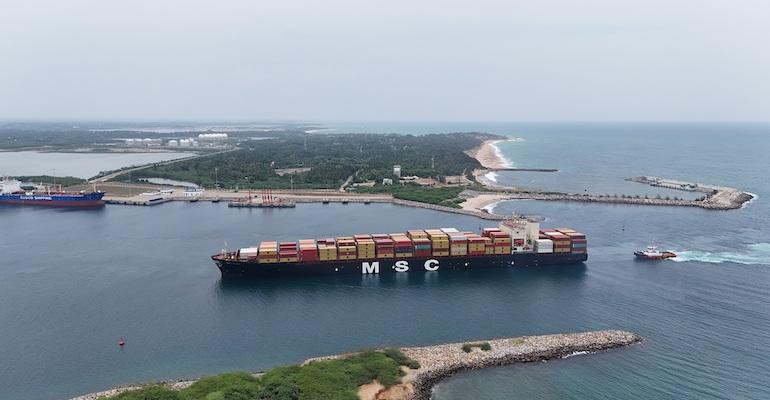HIP said that container transhipment services started on 9 April with a call by the MSC Ingrid which discharged over 500 teu of containers for connection to the MSC Sky II expected to call on 16 April.
The containers onboard the MSC Ingrid were from Rotterdam and will be picked up by the MSC Ingrid which is bound for Rotterdam.
The routing of the containers would imply that MSC is using Hambantota as a relay point for containers from Europe bound for the Middle East that have been rerouted via the Cape of Good Hope due to the Red Sea crisis. MSC has diverted its vessels on voyages between Europe and Asia via the Cape, bypassing the Middle East, to avoid attacks by Houthi rebels in the Red Sea and the Gulf of Aden.
Container handling in Sri Lanka is focused on Colombo port in the capital, which is a major transhipment node for the Indian subcontinent region, while HIP has become a transhipment terminal for automobiles on the East – West trades, as well as oil and gas vessels.
Johnson Liu ,Chief Representative of China Merchants Group in Sri Lanka and CEO of Hambantota International Port Group (HIPG) said, “Launching this new business platform together with MSC is an important breakthrough in the port’s business portfolio, and we are proud to have the world’s largest container carrier as our partner. We are confident our container transshipment service will enhance Sri Lanka’s position in the marine connectivity index for the South Asian region.”

China Merchants holds an 85% stake in HIPG and has a 99-year operating lease from 2017. With the move by MSC to call HIP it is looking to expand container handling capabilities at the Sri Lankan port.
“With MSC’s collaborative partnership, HIPG will now look at expanding our investment in equipment and other infra-structure facilities, enabling us to service larger vessels on the east west shipping route,” Liu added.
Copyright © 2024. All rights reserved. Seatrade, a trading name of Informa Markets (UK) Limited.
Add Seatrade Maritime News to your Google News feed.  |
